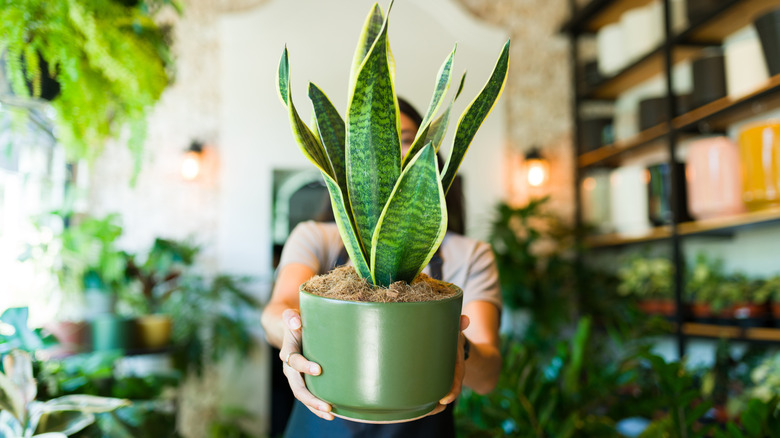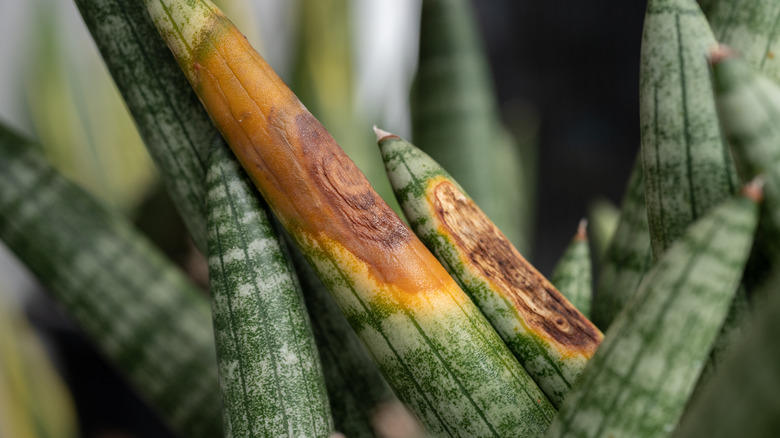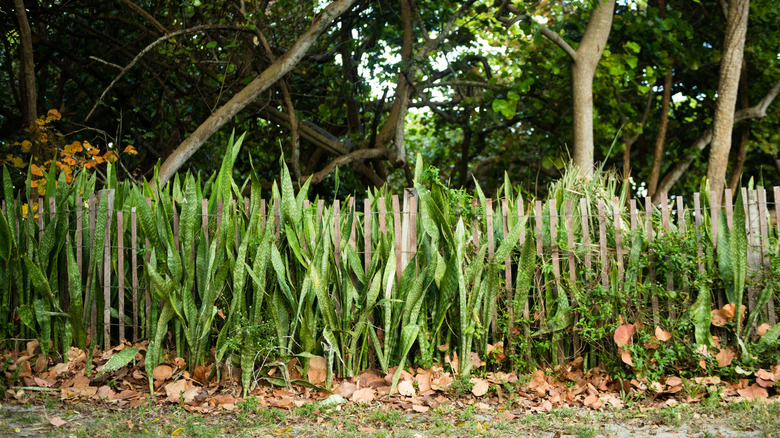What Happens If You Plant A Snake Plant Outdoors?
Snake plants (Dracaena trifasciata) have a reputation for being good indoor plants because of their ability to thrive in any amount of sunlight. They also require very little water and general maintenance to grow, which can make them perfect for novice plant owners and anyone else who might have an otherwise rusty green thumb. However, there are several things to know before planting snake plants, including whether it's best to grow them indoors or outdoors. Overall, it's not considered a good idea to plant snake plants outdoors because of their preference for warmer year-round climates as well as their invasive nature.
Also, if you're wondering about the differences between Sansevieria trifasciata and Dracaena trifasciata, know that these are actually the same plant. In fact, Dracaena trifasciata was previously known as Sansevieria trifasciata until 2017, when further genetic testing revealed that the snake plant actually belongs to the Dracaena genus. For this reason, you might still see snake plants with the old scientific name at nurseries and garden centers, as many producers are still catching up to this official name change. Seeing the previous named plant does not mean the snake plant is any less invasive or outdoor intolerant, since they are one and the same.
Snake plants may not survive in your particular climate
There are a few important pointers for caring for your snake plant, with the primary one being that they ought to be kept indoors as houseplants in most parts of the country. Since snake plants are not usually capable of producing flowers and fruit when kept indoors, you might be tempted to plant them outdoors. However, planting snake plants in a yard or garden does not necessarily guarantee that they will do so. Depending on where you live, snake plants may not survive outside at all.
First, it's important to understand that snake plants belong to the asparagus family and are indigenous to central Africa. Snake plants do best in USDA hardiness zones 9 through 12, which means they could likely survive in the southeastern and southwestern U.S., as well as tropical regions, where the temperatures are more moderate. So, if you live in a colder and wetter climate, snake plants are not likely to do well outdoors. This is especially the case in regions where temperatures regularly drop below 50 degrees Fahrenheit. While these plants are known for growing well in low to full sun, they cannot tolerate much moisture. Too much rainfall and overwatering can both contribute to rotting roots in this plant.
Snake plants can quickly take over other plants outdoors
There are several invasive plants you should never grow, and snake plants are considered to have a high invasion risk in warm climates. Among the reasons why the snake plant is also nicknamed "Mother-in-law's tongue" is because of its tall and sharp leaves that can easily grow up to 4 feet tall. It's also some of these same qualities that can make snake plants invasive, as they can quickly overtake other plants you might have outdoors, keeping them from sun and other resources. What's more, snake plants are considered toxic to humans and pets, which can make these dangerous to plant in your yard if the area is frequently visited by children, dogs, and cats.
If snake plants are indeed planted outdoors in a warmer climate, they can quickly take resources from native plants that might require more water, nutrients, and sunlight. Further, snake plants that do survive in the right outdoor environments could potentially destroy natural ecosystems more broadly and are known problems in some parts of the U.S., such as Florida. If you do live in a warmer climate, you might possibly be able to have a planter with a snake plant on a patio, but you should consider avoiding its placement in the ground.


